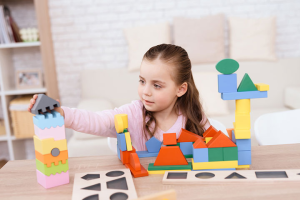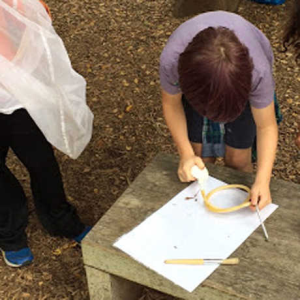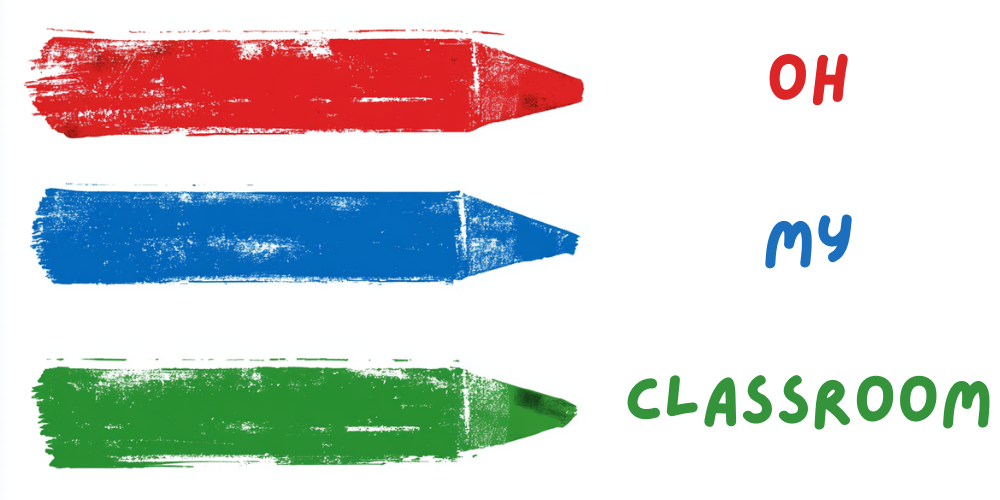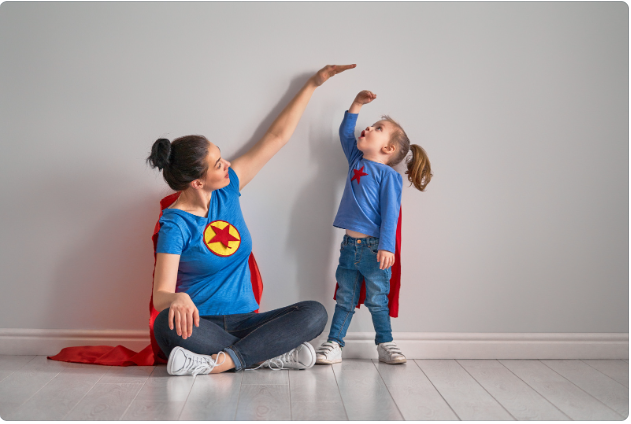The preschool years are a time of remarkable growth and development in children between the ages of 3 and 5.
It is during this period that they begin to explore the world around them, acquire new skills, and develop essential foundations for future learning.
we will explore Preschool Goals for 3 5 Year Olds, highlighting the areas of cognitive development, language and communication skills, social and emotional growth, and physical abilities.
These goals provide a framework for creating meaningful experiences and fostering well-rounded development in young children.
So, let’s dive into these goals and discover how they contribute to the holistic growth of preschool-aged children.
Activity Idea 1: Building Blocks

Activity Description: Provide children with a variety of building blocks of different shapes, sizes, and colors. Encourage them to explore and create structures using the blocks. You can initiate the activity by building a simple structure and inviting the children to replicate or modify it. As they engage in building, ask open-ended questions to stimulate their critical thinking and problem-solving abilities. For example, “How can you make your tower taller?” or “Can you build a bridge using the blocks?” This activity promotes cognitive development by fostering spatial awareness, logical thinking, and creativity.
Activity Idea 2: Story Time

Activity Description: Designate a cozy area in the preschool classroom or home where children can gather for story time. Choose age-appropriate books with colorful illustrations and engaging narratives. Read the story aloud, emphasizing the characters, plot, and important details. Encourage active participation by asking questions related to the story, such as “What do you think will happen next?” or “Can you describe the main character?” After reading, engage the children in a discussion about the story, allowing them to express their thoughts and interpretations. This activity promotes language development by expanding their vocabulary, improving listening skills, and fostering a love for storytelling.
Related: 20 Easy Art Projects for Kindergarten
Activity Idea 3: Collaborative Art

Activity Description: Set up an art station with various art supplies such as crayons, markers, paints, and paper. Divide the children into small groups and assign each group a collaborative art project. For example, they can create a mural, a large-scale drawing, or a collage. Encourage the children to work together, share ideas, and communicate with each other while creating their artwork. This activity promotes social development by fostering collaboration, teamwork, and the ability to express and listen to others’ ideas. It also nurtures creativity and imagination as the children combine their artistic skills to produce a collective piece of art.
Activity Idea 4: Feelings Exploration

Activity Description: Create a “feelings corner” with a variety of emotion cards or pictures displaying different facial expressions. Gather the children and introduce them to different emotions, such as happy, sad, angry, and surprised. Show them the emotion cards one by one and ask them to identify and describe the feelings depicted. Encourage open discussion about situations that may elicit these emotions and ways to cope with them. Additionally, provide opportunities for the children to express and regulate their own emotions through activities like drawing or role-playing. This activity supports emotional development by promoting emotional awareness, empathy, and self-expression.
Activity Idea 5: Outdoor Obstacle Course

Activity Description: Set up a fun and age-appropriate outdoor obstacle course using various props such as cones, hula hoops, tunnels, and balance beams. Divide the children into small groups and guide them through the course. Include activities that require climbing, jumping, crawling, balancing, and throwing. Encourage the children to complete the course multiple times, promoting the development of their gross motor skills, balance, and coordination. This activity also provides an opportunity for social interaction, as children can cheer each other on and collaborate to navigate the obstacles.
Activity Idea 6: Sorting and Classifying

Activity Description: Provide a variety of objects or pictures that can be sorted into different categories, such as colors, shapes, sizes, or types of animals. Place sorting trays or bins labeled with each category. Encourage the children to examine the objects and sort them into the appropriate bins based on their shared characteristics. As they engage in sorting and classifying, ask guiding questions like “Why did you choose to put this object in that category?” or “Can you find another object that belongs in the same category?” This activity stimulates cognitive development by promoting logical thinking, pattern recognition, and classification skills.
Activity Idea 7: Dramatic Play

Activity Description: Set up a dramatic play area with costumes, props, and pretend play materials, such as a kitchen, doctor’s office, or grocery store. Encourage children to engage in imaginative play by assuming different roles and acting out various scenarios. Provide prompts and open-ended questions to facilitate language development and social interaction. For example, “What would you say if you were the chef?” or “How would you solve this problem as a doctor?” This activity fosters language development, creativity, problem-solving skills, and social interaction as children engage in role-playing and collaborate with their peers.
Activity Idea 8: Nature Walk

Activity Description: Take the children on a nature walk in a nearby park or outdoor area. Encourage them to observe and explore their surroundings, paying attention to different plants, insects, animals, and natural elements. Provide magnifying glasses, binoculars, or notebooks for them to document their findings. Engage in discussions about what they see and encourage them to ask questions about the natural world. This activity promotes scientific thinking, sensory exploration, and an appreciation for nature’s wonders.
Activity Idea 9: Music and Movement

Activity Description: Create a music and movement session where children can explore different types of music and engage in various physical movements. Play different genres of music, including fast-paced, slow, and rhythmic tunes. Encourage children to express themselves through dance, marching, hopping, or clapping their hands to the beat. You can also introduce simple musical instruments, such as shakers or drums, to enhance the experience. This activity promotes physical development, coordination, listening skills, and an understanding of rhythm and tempo.
Activity Idea 10: Puzzles and Problem-solving

Activity Description: Provide age-appropriate puzzles of different complexities, such as jigsaw puzzles or shape-sorting puzzles. Encourage children to work on the puzzles independently or in small groups. Support them when needed, but allow them to engage in problem-solving and critical thinking. As they solve the puzzles, ask questions to stimulate their cognitive skills, such as “What piece do you think fits here?” or “How can you complete the puzzle?” This activity promotes cognitive development by enhancing problem-solving abilities, spatial awareness, fine motor skills, and patience.
Activity Idea 11: Sensory Play

Activity Description: Set up a sensory play station with materials such as colored rice, sand, water, or play dough. Provide various tools and objects for children to manipulate and explore, such as scoops, containers, molds, and utensils. Encourage children to engage in sensory play by touching, molding, pouring, and exploring the materials. This activity stimulates cognitive development by promoting sensory exploration, fine motor skills, creativity, and scientific thinking.
Activity Idea 12: Cooking and Nutrition

Activity Description: Plan a cooking activity where children can participate in preparing a simple, healthy snack or meal. Choose age-appropriate recipes that involve safe and easy-to-handle ingredients. Involve the children in tasks like mixing, measuring, and stirring. Encourage them to discuss the ingredients and their nutritional benefits. As they work together, emphasize the importance of teamwork, sharing, and following directions. This activity promotes life skills, social development, fine motor skills, and an understanding of healthy food choices.
Activity Idea 13: Name Recognition and Writing

Activity Description: Provide each child with a personalized name card or label. Engage them in activities that involve recognizing and writing their names. For example, encourage children to trace their names using their fingers or with various writing tools like markers or crayons. Incorporate sensory materials like sand or shaving cream for a tactile experience. Play games that involve identifying the first letter of each child’s name or matching names to pictures. This activity promotes language and literacy development by fostering letter recognition, name-writing skills, and phonemic awareness.
Activity Idea 14: Outdoor Exploration

Activity Description: Take the children on an outdoor exploration adventure in a safe and nature-rich environment. Encourage them to observe and investigate their surroundings, such as plants, insects, rocks, or weather patterns. Provide magnifying glasses, bug catchers, or notebooks for them to record their discoveries. Engage in discussions about what they find and encourage them to ask questions about the natural world. This activity promotes scientific thinking, physical activity, sensory exploration, and an appreciation for the environment.
Activity Idea 15: Emotional Expression

Activity Description: Set up an art station with various art materials like paint, markers, and crayons. Introduce emotions by discussing different facial expressions and asking children to share times when they have felt those emotions. Encourage them to create artwork that represents different emotions or personal experiences. Provide opportunities for children to discuss their artwork and express how they feel. This activity promotes social and emotional development by fostering self-expression, emotional awareness, empathy, and communication skills.
Activity Idea 16: Nature Scavenger Hunt

Activity Description: Organize a nature scavenger hunt in an outdoor space like a park or garden. Create a list of items or natural elements for children to find, such as a certain type of leaf, a smooth rock, or a bird’s nest. Provide each child with a checklist or a small bag to collect their findings. Encourage them to use their observation skills to locate and identify the items on the list. This activity stimulates cognitive development by promoting problem-solving, attention to detail, and physical activity.
Related: 20 Fun Indoor Scavenger Hunt Clues for Kids
Activity Idea 17: Puppet Show

Activity Description: Set up a puppet theater or use a simple makeshift stage using a tablecloth or cardboard. Provide a variety of puppets or allow children to create their own using paper bags or socks. Encourage children to create stories and act them out using the puppets. They can take turns being the puppeteer and the audience. This activity fosters language development by enhancing storytelling skills, vocabulary, oral communication, and creativity.
Activity Idea 18: Math Manipulatives

Activity Description: Provide a variety of math manipulatives such as counting blocks, pattern blocks, or colorful counters. Create math-related activities that involve sorting, matching, counting, or creating simple patterns. For example, children can sort blocks by color, match objects to corresponding numbers, or create patterns using different shapes. Encourage children to explore and manipulate the manipulatives, engaging in hands-on learning experiences that promote numeracy, problem-solving, and logical thinking.
Activity Idea 19: Yoga and Mindfulness

Activity Description: Introduce children to simple yoga poses and mindfulness exercises. Guide them through activities that promote body awareness, deep breathing, and relaxation. Incorporate storytelling or visualization techniques to engage their imagination. Encourage them to focus on their breath, notice sensations in their body, and practice calming techniques. This activity promotes self-regulation, emotional well-being, mindfulness, and relaxation skills.
Activity Idea 20: Gardening

Activity Description: Create a small garden area where children can participate in gardening activities. Provide child-sized gardening tools, seeds, and plants. Teach them how to prepare the soil, plant seeds, water the plants, and care for the garden. Engage them in discussions about the growth process, the needs of plants, and the importance of taking care of living things. This activity promotes scientific understanding, responsibility, an appreciation for nature, and a sense of accomplishment as children witness their plants grow and thrive.

